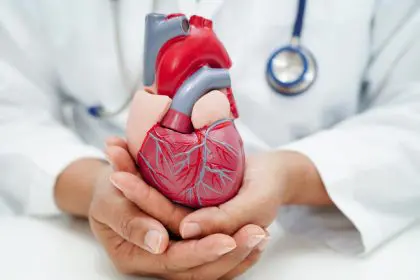The human body often sends warning signals long before a medical emergency reaches its critical stage. Unfortunately, many people dismiss these early indicators as temporary inconveniences or minor ailments not worth medical attention. This dangerous pattern of minimizing symptoms leads thousands of Americans to emergency rooms annually with conditions that could have been addressed earlier with potentially less invasive treatments.
Medical professionals consistently observe that many emergency surgeries result from conditions that presented warning signs days or even weeks before the situation became critical. Understanding which seemingly minor symptoms might indicate serious underlying issues could literally save your life or help you avoid major surgical interventions.
Persistent abdominal pain that comes and goes
Intermittent stomach pain often gets dismissed as indigestion, gas, or dietary sensitivity. While these are common causes of abdominal discomfort, recurring pain—especially if it concentrates in specific areas—merits medical evaluation.
The first concerning pattern involves pain that begins around the navel and migrates to the lower right abdomen. This classic symptom progression often indicates appendicitis, which requires surgical removal of the inflamed appendix before it ruptures and causes potentially life-threatening peritonitis.
The second pattern features steady pain in the upper right abdomen, particularly after eating fatty foods. This discomfort may signal gallstones blocking bile ducts, potentially leading to gallbladder inflammation (cholecystitis) requiring emergency removal.
The third variation presents as severe abdominal pain that radiates to the back. This symptom may indicate pancreatic inflammation or, more seriously, an abdominal aortic aneurysm—a potentially fatal condition requiring immediate surgical intervention.
When abdominal pain persists beyond a few hours, worsens over time, or returns in increasingly intense episodes, seeking prompt medical evaluation becomes crucial. Modern minimally invasive techniques can often address these conditions before they escalate to emergency situations requiring major surgery.
Unusual headaches with specific characteristics
Headaches rank among the most common human ailments, making them easy to dismiss. However, certain headache patterns warrant immediate medical attention as they may signal conditions requiring urgent neurosurgical intervention.
The first concerning pattern is the “thunderclap headache”—an excruciating pain that reaches maximum intensity within seconds. This symptom may indicate a ruptured brain aneurysm, bleeding in the brain, or stroke—all requiring emergency treatment and potentially surgical procedures.
The second pattern involves headaches that consistently wake you from sleep or worsen with position changes, particularly when lying down. These symptoms might signal increased intracranial pressure from a brain tumor, blood clot, or hydrocephalus (fluid buildup), conditions often requiring surgical relief.
The third pattern features headaches accompanied by visual disturbances, confusion, or neck stiffness. This combination may indicate meningitis, encephalitis, or a brain abscess—infections that sometimes necessitate surgical drainage or pressure relief.
When headaches differ dramatically from your typical pattern, develop after head trauma, worsen over days, or accompany neurological symptoms, emergency evaluation becomes essential. Advanced imaging techniques now allow for precise diagnosis and targeted neurosurgical interventions when necessary.
Shortness of breath with minimal exertion
Feeling winded after climbing several flights of stairs happens to many people. However, breathlessness with minimal activity or while resting represents a serious warning sign that something may be significantly wrong with your heart, lungs, or circulatory system.
The first concerning scenario involves sudden onset breathing difficulty, especially when accompanied by chest pain or rapid heartbeat. This combination may indicate a pulmonary embolism—a blood clot blocking arteries in the lungs that sometimes requires surgical extraction or catheter-directed thrombolysis in severe cases.
The second pattern presents as progressive breathlessness developing over days or weeks, particularly when lying flat. This symptom pattern often signals congestive heart failure, which can sometimes require emergency valve repair or other cardiac surgical interventions when medication proves insufficient.
The third scenario features breathing trouble accompanied by a persistent cough, fever, and chest pain that worsens with deep breaths. These symptoms might indicate a lung abscess or empyema (pus collection in the chest cavity), conditions often requiring surgical drainage.
When breathing changes occur without obvious explanation or worsen despite rest, emergency evaluation becomes critical. Advanced cardiac and pulmonary imaging can identify the underlying cause and guide appropriate intervention before the situation becomes life-threatening.
Unexplained weight loss without trying
Dropping pounds without intentional diet or exercise changes might seem like a welcome surprise, but unintentional weight loss often signals serious underlying conditions that may eventually require surgical intervention.
The first concerning pattern involves significant weight loss accompanied by abdominal pain, changes in bowel habits, or blood in stool. This combination frequently indicates colorectal cancer, which requires surgical removal of affected portions of the intestine.
The second pattern features weight loss with yellowing skin (jaundice), dark urine, and upper abdominal pain. These symptoms often point to pancreatic cancer or biliary tract obstructions, conditions that frequently necessitate complex surgical procedures.
The third scenario involves weight loss combined with difficulty swallowing or the sensation of food getting stuck. This symptom combination may indicate esophageal strictures or tumors requiring surgical correction or removal.
When weight loss exceeds 5% of body weight over 6-12 months without intentional efforts, medical evaluation becomes essential. Early detection of underlying causes increases treatment options and may allow for less invasive surgical approaches when intervention becomes necessary.
Changes in bowel or bladder habits
Occasional constipation, diarrhea, or increased urinary frequency affects most people at some point. However, persistent changes in these basic bodily functions often signal conditions that may require surgical correction if left unaddressed.
The first concerning pattern involves alternating constipation and diarrhea, especially when accompanied by narrow stool, abdominal cramps, or blood in stool. These symptoms may indicate colorectal cancer or inflammatory bowel disease complications requiring surgical intervention.
The second pattern features progressive difficulty urinating, weak stream, or inability to completely empty the bladder. This symptom progression often signals prostate enlargement or urethral strictures that may eventually require surgical correction when medication proves ineffective.
The third scenario involves sudden, severe constipation accompanied by abdominal distention and pain. This combination frequently indicates bowel obstruction from adhesions, hernias, or tumors—conditions requiring emergency surgical intervention to prevent tissue death and perforation.
When bowel or bladder changes persist beyond a few days, progressively worsen, or include pain or bleeding, prompt medical evaluation becomes crucial. Early intervention often allows for minimally invasive surgical approaches rather than emergency operations with higher complication rates.
Unusual or persistent skin changes
Skin abnormalities often get dismissed as cosmetic concerns rather than potential health warnings. However, certain skin changes signal underlying conditions that may eventually require surgical management.
The first concerning pattern involves redness, warmth, and pain that spreads rapidly, particularly when accompanied by fever. This symptom combination may indicate necrotizing fasciitis—a fast-moving bacterial infection of deep tissue layers requiring emergency surgical debridement to prevent life-threatening spread.
The second pattern features yellowish skin discoloration (jaundice) that may indicate liver dysfunction or biliary obstruction from gallstones, tumors, or inflammation. These conditions frequently require surgical intervention to restore normal bile flow.
The third scenario involves dark lines under fingernails or unusual nodules under the skin, particularly in the hands and feet. These findings sometimes indicate endocarditis—heart valve infection that may require surgical valve replacement when antibiotics alone prove insufficient.
When skin changes develop rapidly, affect large areas, or accompany systemic symptoms like fever or pain, medical evaluation becomes essential. Modern surgical techniques often allow for targeted intervention with minimal recovery time when conditions are identified early.
Unusual swelling, particularly in one limb
Temporary swelling from injuries or prolonged sitting resolves quickly in most cases. However, asymmetric swelling that persists or worsens often indicates serious underlying conditions that may require surgical correction.
The first concerning pattern involves one leg becoming significantly larger than the other, especially when accompanied by pain, warmth, or redness. This symptom combination frequently indicates deep vein thrombosis—a serious blood clot that may require surgical thrombectomy if extensive or resistant to blood thinners.
The second pattern features progressive swelling of one arm, particularly after breast cancer treatment. This symptom often signals lymphatic system damage that sometimes requires microsurgical lymphatic reconstruction to prevent chronic complications.
The third scenario involves sudden, painful swelling in the scrotum or groin area. This symptom may indicate testicular torsion—a twisted testicle that requires emergency surgical correction within hours to prevent permanent tissue damage.
When swelling affects only one limb, develops without obvious injury, or fails to improve with elevation and rest, medical evaluation becomes crucial. Early diagnosis through ultrasound or other imaging techniques can identify underlying causes and guide appropriate treatment before emergency surgery becomes necessary.
Understanding these warning signals doesn’t replace professional medical advice but provides valuable awareness that might prevent dangerous delays in seeking care. The human tendency to minimize health concerns, combined with busy schedules and access barriers to healthcare, creates a perfect storm where minor symptoms evolve into major emergencies requiring surgical intervention.
Medical professionals consistently emphasize that early evaluation of concerning symptoms often leads to simpler treatments, better outcomes, and fewer complications. The momentary inconvenience of a medical appointment pales in comparison to the extended recovery time, increased risks, and higher costs associated with emergency surgery.
The next time your body sends signals that something might be wrong, consider whether what you’re experiencing matches any of these concerning patterns. Your awareness and prompt action could make the difference between a minor medical intervention and a major surgical emergency.















